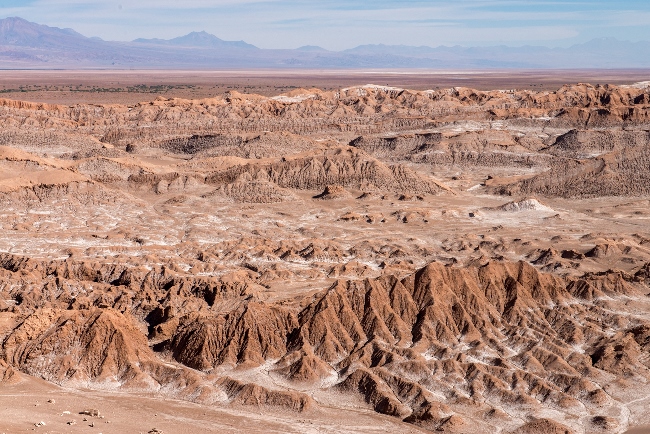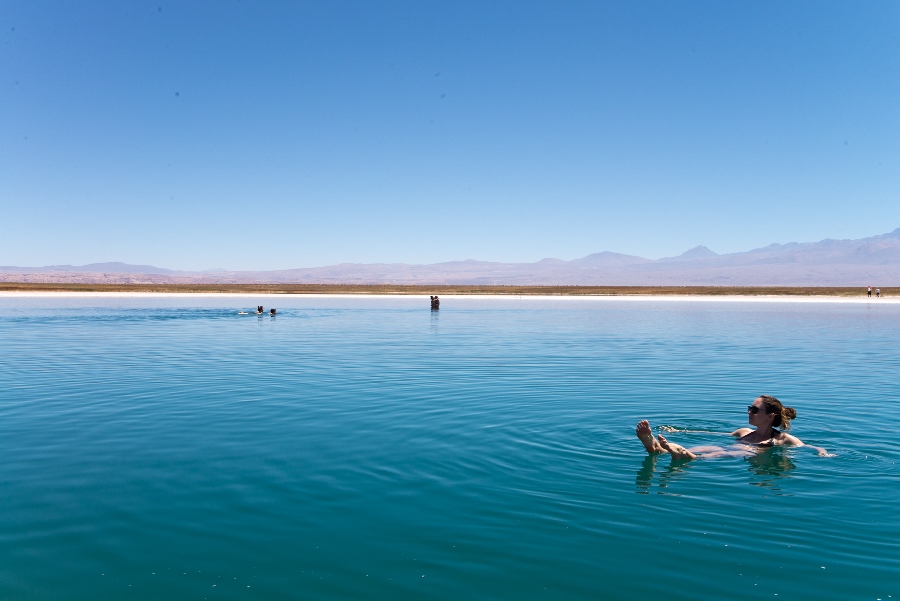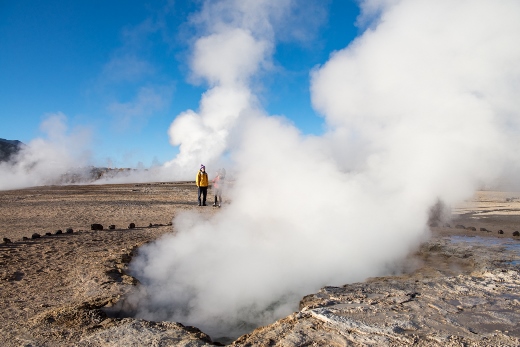Chile’s Atacama Desert - A world Apart
If you would love to visit Mars but aren’t too keen on the one-way ticket scenario, then you should plan a trip to Chile instead.If you would love to visit Mars but aren’t too keen on the one-way ticket scenario, then you should plan a trip to Chile instead.
Chile is home to the high-altitude Atacama Desert, one of the driest places in the world: 128 000 square kilometres sandwiched between the Pacific Ocean and the Andes mountains. The Atacama is one of the world’s most spectacular deserts, with fields of steaming geysers, massive smoking conical volcanoes, craggy mountains, flamingo-dotted turquoise lagoons, salt-encrusted canyons and rugged ravines and miles after miles of rippled pink, apricot and terracotta sand dunes stretching to the horizon.
Most travellers base themselves at San Pedro de Atacama, a dusty, charming little village of adobe buildings, where there are lots of accommodation options. Once you’ve checked into your lodge or guesthouse and start exploring the vast and varied landscapes of the Atacama, you’ll really feel like you’ve landed on another planet.
A good place to see first is Moon Valley (15 km away from San Pedro), an apricot-coloured canyon covered in crunchy salt crystals (give them a lick to replace the salt you lose with your sweat) with rocks that crackle in the late afternoon like the sound of rain on a tin roof. Before you hike through the valley, there are the jaw-dropping views to take in over its Mars-like rocky outcrops, making you feel like you should be wearing an astronaut’s suit.

Once you’ve had a few days to adjust to the altitude of the Atacama, plan a pre-dawn trip to El Tatio, another unmissable attraction of Chile’s Atacama Desert. Arriving just as dawn breaks is best, so you can see the sun rise as plumes of sulphuric steam billow up into the crisp blue sky from some 80 bubbling cauldron-like fumaroles. The world’s highest geyser field – at 4320 metres above sea level – is extraordinary, and its surreality is increased somewhat by the lack of oxygen up there – make sure you bring along some coca tea, the natural antidote to altitude sickness, to stop you feeling dizzy. Bring along eggs for breakfast – you can boil them in puddles of bubbling hot water – as well as your bathing suit: the natural hot pools here are wonderful for a morning swim in the freezing cold air (temperatures can be a chilly -15C).
For such a dry place, there are rather a lot of places to take a dip. On the drive back to San Pedro from El Tatio, which takes you through folds of hills punctuated by fat cardon cactuses, and past the occasional lone vicuña (a wild cousin of the llama), you can find Termas de Puritama. These thermal baths are among the most scenic in the Atacama, nestled between hills and surrounded by long grass and cactuses. Hire a mountain bike to cycle twenty kilometres outside of San Pedro to reach Laguna Cejar, a small salt lagoon with a striking shade of turquoise. The lagoon is icy cold, so it provides welcome relief from the heat, especially if you’ve arrived by bike. It’s so salty that it’s impossible to swim properly – all you can do is float effortlessly on your back, taking in the serenely minimalist palette of sand, water and cloudless sky. Then there are the Ojos del Salar – two circular saltwater craters that look like owl eyes when seen from above. Another frigid cool off spot!

Salar de Atacama, Chile’s largest salt flat, looks like the surface of the moon: a plain of jagged plates of salt studded with flocks of candy-pink flamingoes. Visit the salt flat to walk on its crusty salt paths at sunset, to see the incredible sight of the neon-pink sky matching the colour of the beautiful flamingoes against a backdrop of the majestic Andes mountains on the horizon.
There’s a lot of ancient history to the Atacama, and you can see some of it be exploring old villages and archeological sites such as the Tulor village complex where the remains of 2500-year-old villages can be explored.
If you’re after more adrenaline, you should go sand boarding in Death Valley, a 10-minute drive from San Pedro. Be prepared for some bruises (and a lot of fun) as you surf down the 100-metre high dunes. Other fun ways of experiencing the Atacama’s beautiful landscapes include hiking, mountain biking and horse riding. For a truly epic hike, trek up to the top of Lascar volcano, which takes a day. It’s not for the faint hearted or the unfit – the summit is 5600 metres above sea level – but the views of the smoking crater and the surrounding landscapes are phenomenal. A popular mountain biking trip, meanwhile, is to Quedabra del Diablo – the Devil’s Gorge – where you cycle on narrow paths in a spectacular canyon to explore caves and dunes.
Despite the Atacama’s growing popularity as a tourist destination, everywhere you go you’ll find extraordinary peace and quiet. The vast desert silences of a few days in the Atacama have a profoundly calming effect that feels like a month of meditation classes.
While most of your adventures in the Atacama will take place during the day, the nights in the desert are no less spectacular. The absence of light pollution as well as few clouds and high altitude make the Atacama one of the world’s best places for stargazing. Close to San Pedro is an observatory where you’ll look up at the night sky awash with stars through one of their telescopes, with an astronomer pointing out the constellations to you. You’ll be transported to a world as far away as the Atacama feels from home.

Sixty kilometres to the east of San Pedro de Atacama is the world’s largest astronomical project. On a 5000-metre high plateau 66 radio antennas at ALMA are pointed up at the heavens to capture radio waves from the dark parts of the universe, so researchers can see where the first galaxies were formed, but more excitingly, to find out whether there are other solar systems that have the conditions to support life. As you experience Mars-like landscapes on your adventures in the Atacama, astrophysicists and astronomers are probing the deep reaches of the cosmos for extraterrestrial beings. Until they find something, the closest we’ll get to experiencing life on other planets is a trip to the Atacama Desert.
